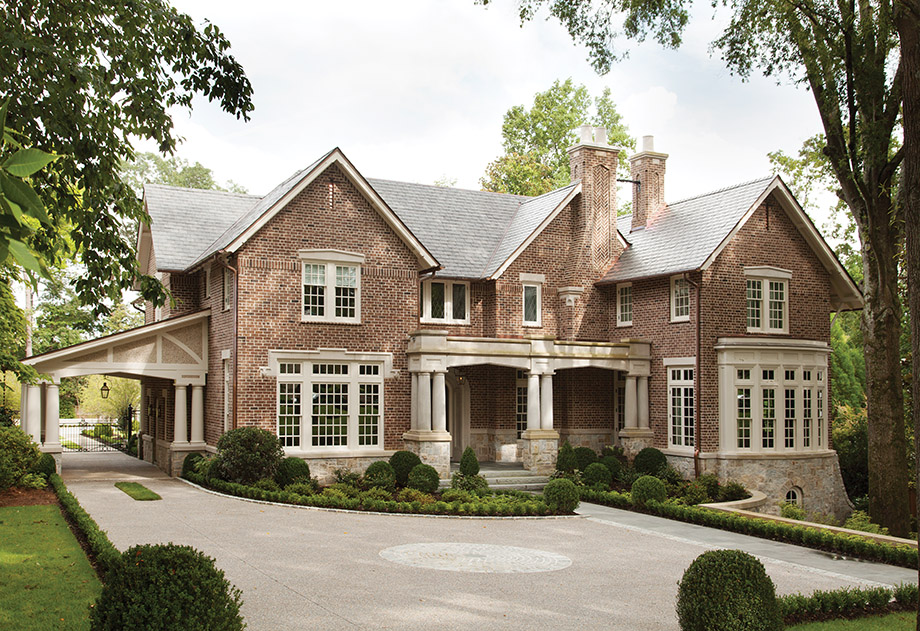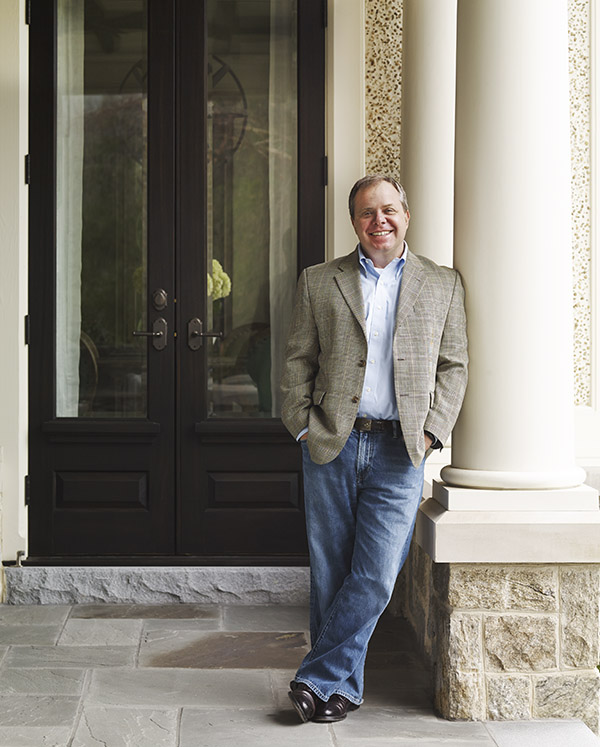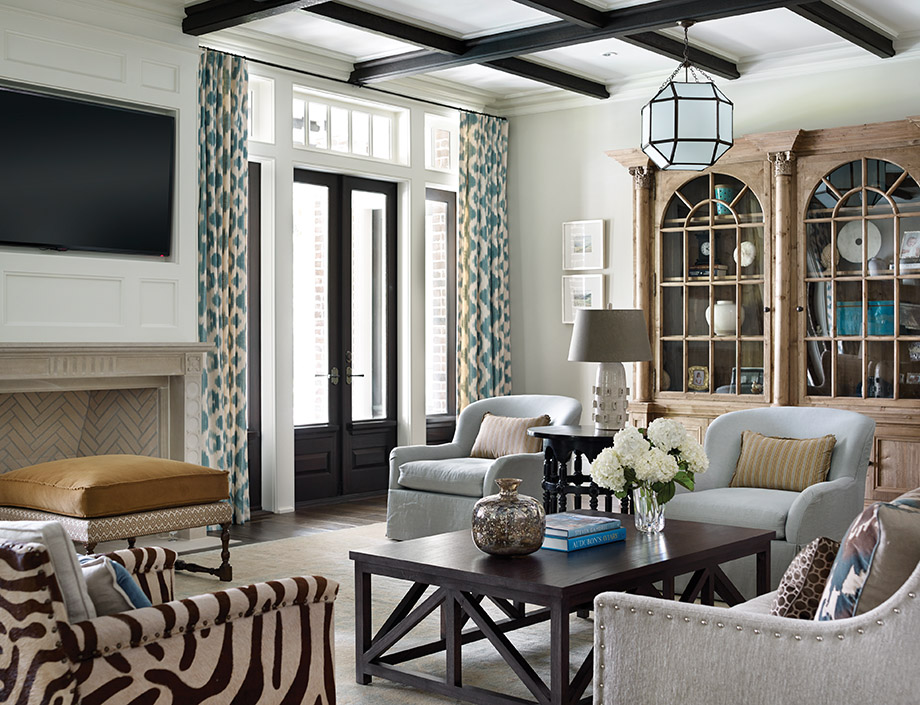
Photograph by Emily Followill
In 2008, architect Frank Neely’s clients called him with bad news. They’d decided not to go ahead with the renovation he’d drafted of the 1940s-era Buckhead home where they’d lived for more than 15 years. But three years later, the couple came calling again: They wanted him to create a completely new house—a grand English Tudor.

Photograph by Emily Followill
Their request was right in Neely’s wheelhouse, as he specializes in historic design. “When an architect is truly successful doing historic work, no one would realize he was even here,” says Neely. “My hope would be that folks driving by would just assume it’s a 1920s house and have no idea it is a Frank Neely.”
English Tudor was popular when many intown Atlanta neighborhoods—such as Morningside, Druid Hills, and parts of Buckhead—were originally built. Neely kept the house authentic by using handcrafted materials, techniques, and structures appropriate to the period. As the three-year project continued right through the recession, he had his pick of skilled craftspeople.
“Every piece of molding was made using a custom knife,” says Neely. “There’s a consistent theme, but there are different profiles for every room.” In fact, he created a half-inch-thick pile of hand drawings, including 10 pages just for the limestone fireplaces and trims.
Throughout the home are bespoke touches such as rounded corners where the foyer walls meet each other and the ceiling, a gracefully bowed-out handrail on a stairwell landing, recessed cabinetry, and dozens of leaded-glass arched windows. “The beauty of having something fabricated is that you can do whatever you want without changing the budget,” says Neely. “When all the windows are custom, nothing is custom.”

Photograph by Emily Followill
Rather than having the paneling, molding, and cabinetry painted, Neely specified ancient methods of fuming and ebonizing. For dark oak, steel wool is soaked in vinegar to create iron oxide. When the liquid is applied, the wood’s natural tannins turn it black. (Warning to DIYers: The chemical reaction releases hydrogen and will explode in a closed container.) Fuming, which turns oak a smoky brown, is done by exposing wood to ammonia or ammonia fumes. This process was discovered in Old English barns, notes Neely, where oak was exposed to ammonia given off by the horses.
Neely also adhered to precedent by mimicking ancient building techniques, even when certain trims or supports are now more decorative than functional. For example, in the study, he placed a heavy oak ceiling beam across the front bay window, which creates the illusion of supporting the massive two-story gable above. “As we go through suburbia and we see the Sheetrock mansions, what’s going on outside is never implied inside,” he explains.
The custom approach inadvertently made the house very eco-friendly. “The cabinetry is handmade not because it’s green and the cool thing to do, but because three guys in a shop made it out of maple and locally sourced wood,” says Neely. “The house is entirely handmade brick, slate, limestone, and granite, which are all natural materials.”

Photograph by Emily Followill

Photograph by Emily Followill
The interior design, by Brian Watford, reveals contemporary inspiration—from a mosaic tile backsplash in the butler’s pantry, accented by mirrored tiles, to the zebra-patterned stair runner. However, the homeowners tried to keep at least one sentimental piece in every space. In the family room, it is a dark cherry hutch that seems at home with the oak coffered ceiling.
“I want the house to feel like this is the third or fourth generation living in this place,” says Neely. “That’s our overarching goal, for it to look like it already has stories.”
This article originally appeared in the Spring 2015 issue of Atlanta Magazine’s HOME.
























